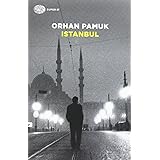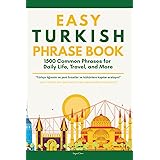by Faik Tunay
Today, the degree of biological richness has also been a scale in determining the importance of countries. This diversity, which is vital for all living things, continues to disappear rapidly.
28.6.2021
Unfortunately, this existence of our country is also under threat. Anatolia has been a shelter for all living things for thousands of years. Being the place where three plant geographical regions and three main climates meet are the biggest sources of Anatolia’s wealth. The incredible biological richness of Anatolia, which also takes the name of Asia Minor, is still at an interesting level despite being destroyed for centuries. The most obvious indicator of this is that a new plant species is being discovered on average every ten days in Turkey.
Although Turkey covers 0.6% of the world’s land, it hosts 2.6% of all plant species in the world. However, Turkey is the only country where three phytogeographic regions meet. Euro-Siberia (EUR-SIB), Mediterranean (MED), and Iran-Turan (IR-TUR) References: Flora of Turkey and the East Aegean Islands by Professor PHDavis from Edinburgh University. This difference creates various sub-climatic zones and very special habitats in our country. For example, while there is a Siberian-like climate on Mount Ararat (5165 meters), which is Turkey’s highest mountain with an average altitude of 1100 meters, Mediterranean climate features are observed in the Iğdır plains at its base, where even cotton can be grown. There are many different plants all over Turkey.For example, the Piyan plant, which grows around Akşehir and Eber lakes, has three to four fertile ovaries in each flower. Piyan is one of the two known species among 18000 species of the legume family. This genetic feature can create various possibilities depending on the developing technology. For example, if it can be transferred to beans, lentils and chickpeas from the same family, it leads to a significant increase in yield.
While Turkey imported about 240 thousand tons of lentils in 2019, it imported 372 thousand tons in only the first 8 months of 2020, but even this data shows that the effective use of the piano can provide a significant increase in productivity. Every part of Turkey is very rich in terms of plant diversity. The north of Mesopotamia, where the Tigris and Euphrates rivers were irrigated and where the first regular agriculture was made in history, Southeastern Anatolia is among the important gene centers of the world in terms of food crops, especially cereals and legumes. The problem caused by an important disease in the most productive wheat type of the USA was solved by transferring genes from the natural wheat of Southeastern Anatolia. The application, which provides both disease-resistant and high-yielding wheat, also provided significant savings in agricultural pesticides. References: Damania AB 2008 History,Achievements and Current Status of Genetic Resources Conservation There are many studies confirming that wheat farming first started in the Karacadağ region of Southeastern Anatolia. All the world’s wheat varieties have descended from three ancestors in a long evolutionary process. All of these species and twenty species that do not directly participate in the evolution process of wheat occur naturally in Anatolia. Despite all these, Turkey is a country that simultaneously exports and imports wheat. Looking at the last 15 years, it is seen that some years imports and some years exports are high.All of these species and twenty species that do not directly participate in the evolution process of wheat occur naturally in Anatolia. Despite all these, Turkey is a country that simultaneously exports and imports wheat. Looking at the last 15 years, it is seen that some years imports and some years exports are high.All of these species and twenty species that do not directly participate in the evolution process of wheat occur naturally in Anatolia. Despite all these, Turkey is a country that simultaneously exports and imports wheat. Looking at the last 15 years, it is seen that some years imports and some years exports are high.
Another important potential exists for organic farming. There are still regions in Turkey that have not met with pesticides and chemical fertilizers. The consumption of pesticides per hectare is less than one third compared to the EU, and it does not exceed half of chemical fertilizers. Although Turkey has very suitable conditions for organic production and a high export potential, its share in the world organic food market is unfortunately very low. If we make a broad definition, organic agriculture; It includes human and environment-friendly production systems aimed at re-establishing the natural balance lost as a result of faulty practices in the ecological system.It is a production method that recommends benefiting from parasites and predators and adopts the principle of increasing the quality of the product, not increasing the quantity in production. According to the famous work of De Materia Medica by the physician P. Dioscorides, who lived in Kozan in the first century, Anatolia is also a very important center in terms of medicinal and herbaceous plants. If organic agriculture and medicinal plants are handled correctly, it can provide serious advantages to Turkey. Turkey has 10000 plant species, while the whole European continent has 13000 plant species. More than 3000 endemic plant species are as common in Europe. In addition to the number of species that countries have in terms of biological diversity, the number of endemic (limited only to that country) species is also of great importance. Turkey is one of the world’s remarkable countries in terms of endemic plants. About one out of every three flowering plant species is endemic.The number of endemic species is higher than the number of endemic species in all European countries.
However, the fauna of Turkey is close to the European continent with more than 60000 animal species, and according to scientists, many species are still waiting to be discovered. During the bird watching tour organized in 2005, 276 bird species were identified in three weeks. University of Utah lecturer ornithologist Assoc. Dr. According to Çağan Şekercioğlu, this number, which is a country record, shows that Turkey is rich in birds among non-tropical countries. Another striking example applies to bees. Turkey hosts at least five honeybee breeds in parallel with its plant diversity and different climatic regions. Buckfast hybrid, one of the most productive bees in the world, was produced in England by using the male line of the bee race of Central Anatolia. Anatolia, which has exceptional economic value and is extremely suitable for hybrid production,It is home to many bee breeds.
In order to secure our future, agriculture and livestock policies need to be reviewed very urgently and protecting our country’s biodiversity should be our priority. Based on scientific studies, it is also important to benefit and evaluate any species in a sustainable way without endangering its extinction. The priority for the extinction of our genetic resources or the endangerment of their descendants is to correctly identify the threat factor or factors. Unless the cause is revealed correctly, the desired result cannot be achieved with the measures to be taken.
* Faik TUNAY, 24th Term Istanbul Deputy, Businessperson





















